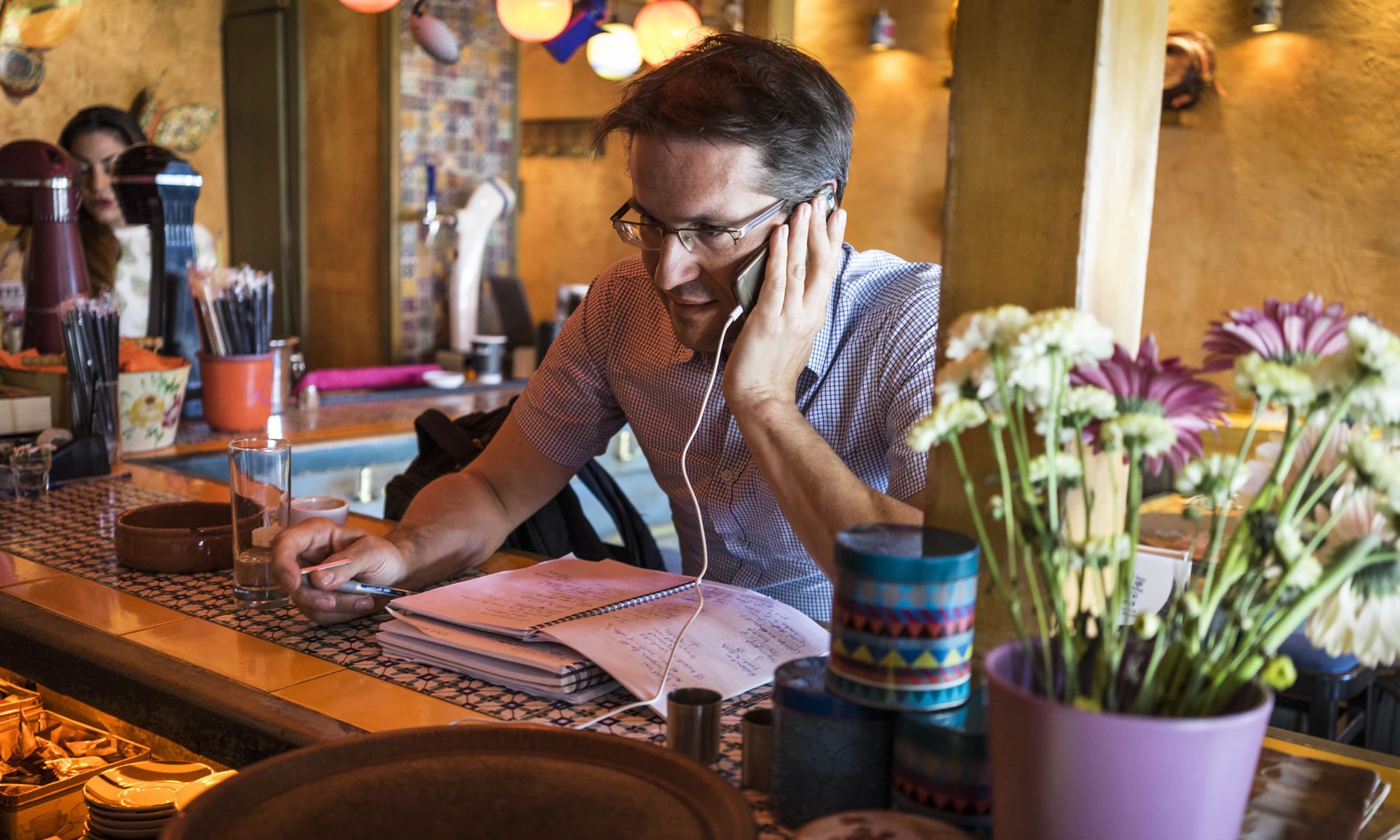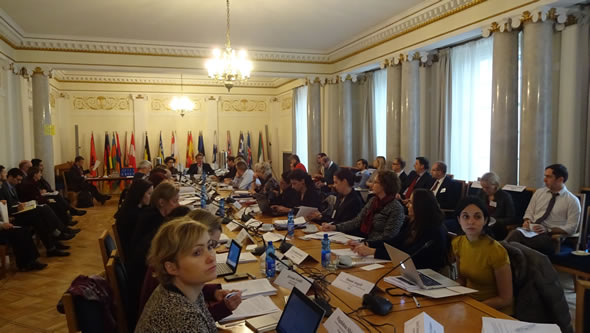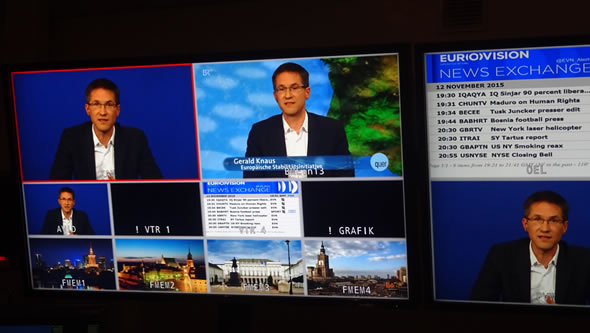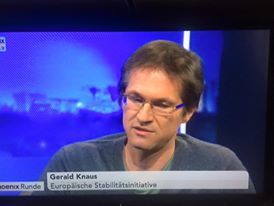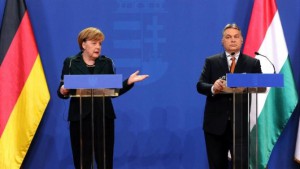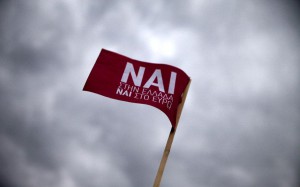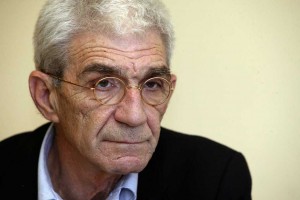‘Ik was in Izmir en zag: we hebben geen tijd meer’
I was in Izmir and saw: we have no time anymore
The article explains how Diederik Samsom [leader of the PvdA, the Dutch Labour party], on a trip to Turkey that started on 5 December 2015, went on a patrol with the Turkish coast guard and realized that things had to be done differently. From this emerged his new plan to stop the flow of refugees. Prime Minister Rutte immediately called it “Plan Samsom”, with Samsom commenting in response: “Mark does this always very smartly.”
The article notes that it is the height of the waves at sea that determines how many people cross, “not our action plans”. He writes, summarising Samsom’s view, that “we need to move towards a system where the crossing is pointless”.
The article continues that “the district of Izmir in Turkey where refugees and smugglers meet” is a small Syria. Diederik Samsom realised that “this is totally uncontrollable. The squares, the bazaar, the restaurants and the shops, they form a single market for illegal travel to Europe elusive to police control.” The same night Samsom met motivated and frustrated police and border guards in Cesme, opposite the Greek island of Chios. The article quotes Samsom about the island: “You can almost touch it, it is so close”. There is a 20 kilometer-long coastal road. The author quotes Samsom:
“A beautiful coastline with little beaches, with the same scene on each of these beaches. Refugees come running down goat paths, carrying folded rubber boats and luggage. On the beach, [the boats] are inflated quickly, by hand or with air cartridges. Within 10 minutes they leave. The only one that can stop them is the coastguard. But it cannot be everywhere at once.”
“The night when I was there, twenty boats left. We did not manage to catch even one of them. The following day there was a picture in the newspaper of two drowned children, on one of the beaches where I had been.”
When Samsom returned to The Hague he realized that the long-term idea – that asylum claims are handled outside Europe – had to be brought forward dramatically. Samsom elaborated:
“For me it was clear: we do not have years. This should be put on track before the new refugee season, this spring. On the Turkish coast, a kind of highway to Europe has been built. With a complete infrastructure of smuggling networks and – since the Turkish authorities have banned the import of Chinese dinghies – illegal boat factories. This attracts more and more people, especially North African men. The refugee stream will double easily.”
A few days later, Samsom was sitting with Dutch Prime Minister Mark Rutte.
“I told him, it is an illusion to think that if we deploy the coast guard, Frontex in the middle and if we pay the Turkish police, a solution will be found. All these measures contribute, they are needed, but they are not sufficient. The height of the waves at sea determines how many people cross, not our action plans. We need to move towards a system where the crossing becomes pointless. As long as the crossing offers a chance, however small, people seem willing to even lose their children on their way.”
The article notes that the plan that Samson put to Rutte has the charm of simplicity:
“The asylum request of everybody that arrives on Chios, Lesvos, Kos or any other Greek islands is declared inadmissible because [the refugees] come from Turkey, which is a safe country for refugees. They will be returned back there by ferry. However, Turkey will accept them only if large numbers of recognized refugees can go to Europe from Turkey in a legal manner. [There must be] a legal asylum route for a couple of hundred thousand refugees per year. Of this I [Samsom] convinced Mark [Rutte]. On the same day, he called it immediately the Samson plan. Mark does this always very cleverly, in this way we commit to each other.”
More excerpts from the interview with Samsom:
How many refugees can go yearly to Europe from Turkey?
The Turkish say 500,000, as many as possible, but that’s not going to happen. Between 150,000 and 250,000 per year …
Will EU countries receive compulsory quotas?
That was the next issue and we worked on it last month. At first you think: of course everyone has to contribute. However, we did this experiment in the EU last summer with the redistribution plan for 160.000 refugees who were already in Italy and Greece. I remember that I thought at the time: good, those who were not ready to cooperate were outvoted. No single country can block the solution anymore. However, they can actually undermine it and they managed to do so. Compulsory quotas do not work.
So it will happen on a voluntary basis?
Yes. There will be a little table with all the Member States and then there will be many empty spaces after their names. There may be 18 empty spaces, and in ten spaces there will be numbers. I am in intense contact with some of these ten because there are Social Democrat in government. These are Germany, Austria and Sweden, all countries that, just like the Netherlands, have large numbers of refugees. Countries that are convinced that the current influx is unsustainable. The welfare state, which all Social Democrats promote, will collapse if we do not control the refugee flow. In the worst case scenario, only these countries will cooperate with others such as France, Spain and Portugal. If there will be 250,000 legal refugees, Netherlands will have to accept 20,000-30,000. This is considerably fewer than the 58,000 who came last year.
So, even if only a small group of Member States participate, the number of 150-250,000 refugees coming to Europe must be respected?
The leading group that participates will have to accept this number. Otherwise, Turkey will not cooperate.
Then the rest will just lean back (and do nothing).
The risk is enormous. You could also lean back, but this does not work. Germany is convinced that a leading group has to step forward, this is how the EU makes progress. Gabriel (leader of German Social Democrats and Vice PM) said to me: ‘Imagine that we take 300,000 refugees from Turkey every year and we Germans are the only crazy ones to do this – we will still be better off than with the more than one million last year.
Thus, the countries that receive the most refugees will continue to do so?
Yes, but the numbers will be lower and more controllable. Now the refugee stream is Darwinism at its best, the law of the jungle. Look at all the men coming from North Africa. If we make an agreement with Turkey on a legal route, it will be only families coming from Syria, Iraq, Afghanistan and Somalia.”
Nonetheless: you reward the countries that disrespect European agreements.
But we will lead a European project. Because the financing will be done with EU money. The costs that the leading group will incur by receiving the refugees will have to be shared by everyone, because this will become the permanent asylum system. I do not have endless patience, even Poland will have to accept it.
You negotiate with Germany, Sweden and Austria. Why not with France, there is also a Socialist government?
France is dodging the issue. PM Valls says ‘intéressant, très intéressant’ when I call and then hopes that I will not inquire further. What I notice is that the French are hoping that this problem will pass them. However, in the meantime Calais is on fire! Paris will need to participate, however, for this some German pressure is needed.
You accept division in the EU on a crucial proposal: that does not look good.
Even if everyone participated, it would not influence the numbers much, the ‘refusers’ are mostly small Member States. It is more a principle than a necessity that ten Syrian families should soon be able to go to Latvia or Czech Republic. We could accommodate these ten families also in the Netherlands, really. What matters is that big countries such as Italy and the UK participate. Receiving refugees and the preservation of the welfare state are fundamental issues. You resolve them only if you dare to look at them from a practical point of view.”
…
Why will Turkey agree? Now 1.5 million leave for Europe, soon it will be only 250,000.
Turkey knows that the situation is unsustainable. It is like a business deal: If you pull someone’s skin over their ears [meaning: paying someone way too much], then that is immediately the last deal. We need each other. The 3 billion Euros that EU has promised to Turkey will otherwise disappear fast.”
Turkey is not a safe country, according to the UN you cannot send refugees back there.
The developments go fast. I see Alexander Pechtold (leader of the D66, whose party supports the ruling coalition) still stand in the debate on the asylum letter, with such a dismissive gesture: who invents this, what nonsense, this will never happen. No one could foresee back then, not even Pechtold, that Turkey would give Syrian refugees the right to work, that their children are even sooner allowed to go to school before they get asylum status. We are not far from the moment that Turkey will receive the status of a safe [third] country. Then it is possible to return refugees to Turkey under the UN convention. Will this be on time? The puzzle pieces need still to be put, however, we have them all in our hand.
Rutte said in January in the European Parliament that the refugee flow will be reduced in eight weeks. Is the Samsom plan a European policy by the end of March?
I consider the chance realistic that this spring a leading group of EU countries will have an agreement with Turkey over a legal migration route for a couple hundred thousand refugees per year in exchange for the direct readmission of everyone that enters via Greece.
What is Rutte doing this week to put forward the plan in Brussels?
The same as me, but with more executive power. Rutte… spends many hours every day working on. He is very hands-on, almost un-European, where often the meeting is the message. Rutte is well placed in order to solve this problem … When Rutte sees that the time is right he will present it in Brussels.”
And if that time never comes?
That is unacceptable. Then every country puts their own fences which will become a meter longer every passing month. Then all Member States set ceilings for the influx of refugees. The result is the worst of the worst: humanitarian dramas and a still more uncontrollable refugee stream. People will not get discouraged by fences, on the contrary: they will be more motivated to pass them with all the bad consequences. Not long ago we thought people would not be crazy enough to go with their small children in wrecked boats. But they so, even in winter. Refugees deserve a safe haven but the people who live here deserve that we protect their welfare.
If the Turkey-Greek route closes, migrants will choose another way.
The flow will not disappear. Europe is a destination for life. For this we must be proud, but it has also disadvantages. Migrants will indeed try to find another way, however, this Turkish-Greek “highway”, which by now all of North-Africa has discovered, needs to be closed. Let us start with that. I don’t understand how we can put up with an illegal migration of this magnitude.”
